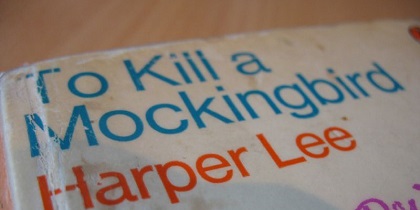
December 3, 2018, by Sunita Tailor
Review on the power of prejudice in Harper Lee’s, ‘To Kill A Mockingbird’
This blog post was written by first year English student, Harriet Mills.
To Kill A Mockingbird was the novel that made me see that books are about way more than just the plot or ‘telling a story.’ After reading such a powerful book that explores the power of stereotypes and contextually the deep-rooted injustice within 1930s Southern America, I learned that literature considers fundamental messages through characterisation and symbolism.
It becomes apparent that Lee purposefully creates vulnerable and helpless characters that are subject to ongoing prejudice to make a comment on social issues at the time. She explores how discrimination and forcing people to live in perpetual suffering was a scapegoat to extreme poverty during the great depression.
The story focus’ upon the trial of Tom Robinson who is wrongly accused but is helpless due to being literally trapped in the colour of his skin and the racial prejudice that comes with this. He therefore relies on the moral voice of Atticus who understands it is a ‘sin to kill a mockingbird,’ in other words proving the unjust nature of tormenting the innocent.
Characters such as Tom Robinson and Boo Radley who represent these metaphorical mockingbirds are compared with Bob Ewell, the antagonist who is described as a ‘bantam cock,’ to magnify the contrast in respect and morals between the good and evil. At the end of the novel, the fact that Boo Radley kills Bob Ewell can be seen as almost a victory for the innocent in eradicating this deep-rooted evil.
In this book Lee teaches us that even though in extreme cases social codes can overpower legal ones it is important to disregard previous stereotypes and not to judge someone because ‘you never really understand a person until you consider things from his point of view…until you climb in his skin and walk around in it.’
No comments yet, fill out a comment to be the first


Leave a Reply